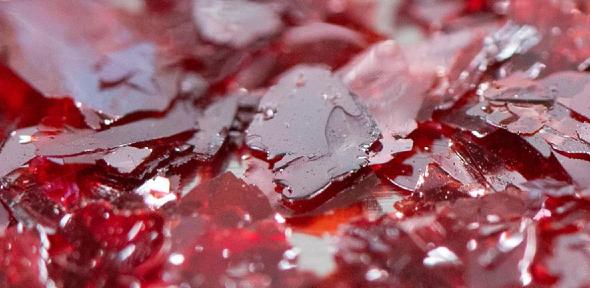
Using X-rays to see inside the human body has revolutionised non-invasive medical diagnostics. However, the dose of X-rays required for imaging is far higher than background levels, due to the poor performance of the detector materials currently available. This can cause harm to patients, and in some cases even cancer.
A team of researchers, jointly led by the Universities of Oxford and Cambridge, have discovered that a solar cell material – bismuth oxyiodide (BiOI) – is capable of detecting X-ray dose rates over 250 times lower than the current best performing detectors used commercially. This has the potential to make medical imaging safer, and open up new opportunities in non-invasive diagnostics, such as X-ray video techniques. Their results are reported in the journal Nature Communications.
“We have developed BiOI single crystals into X-ray detectors that work over 100 times better than the current state-of-the-art for medical imaging,” said Dr Robert Hoye from the University of Oxford, who led the work. “BiOI is nontoxic, stable in air, and can be grown cost-effectively and at scale. We are very excited by the potential BiOI has to make the next generation of non-invasive diagnostics more accessible, safer, and more effective.”
BiOI is a nontoxic semiconductor that absorbs visible light and is stable in air. Owing to these qualities, over the past decade there has been a surge of interest in this material for solar cells (turning sunlight into clean electricity), photoelectrochemical cells (turning sunlight into fuels) and energy harvesting to power smart devices, among many other applications.
"Showing that these simply-processed, low-temperature grown, stable crystals can give such high sensitivity for X-ray detection is quite remarkable. We began working on this material, BiOI, several years ago, and we find it outshines other rival materials in a range of optoelectronic and sensing applications, when toxicity and performance are considered together." Professor Judith Driscoll, Department of Materials Science and Metallurgy,
The researchers formed an interdisciplinary team to understand why BiOI works so well as an X-ray detector. They used advanced optical techniques to resolve processes taking place over a trillionth of a second, and coupled these with simulations to link these processes with what is happening at the atomic level.
"We have built a microscopic quantum mechanical model of electrons and ions that can fully explain the remarkable optoelectronic properties of BiOI that make it such a good material for X-ray detection. This gives us a roadmap for designing even more materials with similarly advantageous properties." Dr Bartomeu Monserrat, Department of Materials Science and Metallurgy,
The study also involved researchers from Imperial College London, Queen Mary University London, Technical University Munich and CNRS in Toulouse.
Read the full University of Cambridge article
R A Jagt, I Bravić, et al. ‘Layered BiOI single crystals capable of detecting low dose rates of X-rays.’ Nature Communications (2023). https://doi.org/10.1038/s41467-023-38008-4
Image credit: Bismuth oxyiodide crystals, by John Freeman

